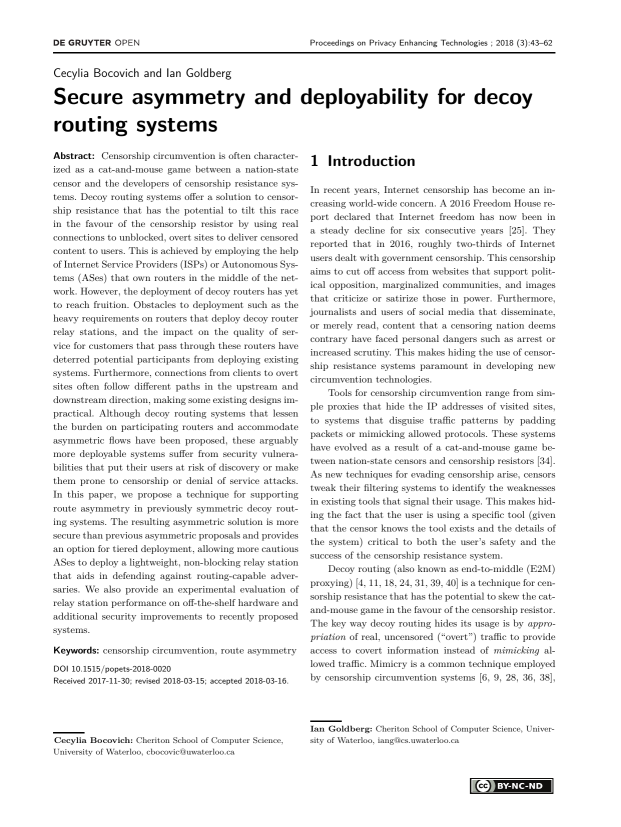Secure asymmetry and deployability for decoy routing systems
Authors: Cecylia Bocovich (Cheriton School of Computer Science, University of Waterloo), Ian Goldberg (Cheriton School of Computer Science, University of Waterloo)
Volume: 2018
Issue: 3
Pages: 43–62
DOI: https://doi.org/10.1515/popets-2018-0020
Abstract: Censorship circumvention is often characterized as a cat-and-mouse game between a nation-state censor and the developers of censorship resistance systems. Decoy routing systems offer a solution to censorship resistance that has the potential to tilt this race in the favour of the censorship resistor by using real connections to unblocked, overt sites to deliver censored content to users. This is achieved by employing the help of Internet Service Providers (ISPs) or Autonomous Systems (ASes) that own routers in the middle of the network. However, the deployment of decoy routers has yet to reach fruition. Obstacles to deployment such as the heavy requirements on routers that deploy decoy router relay stations, and the impact on the quality of service for customers that pass through these routers have deterred potential participants from deploying existing systems. Furthermore, connections from clients to overt sites often follow different paths in the upstream and downstream direction, making some existing designs impractical. Although decoy routing systems that lessen the burden on participating routers and accommodate asymmetric flows have been proposed, these arguably more deployable systems suffer from security vulnerabilities that put their users at risk of discovery or make them prone to censorship or denial of service attacks. In this paper, we propose a technique for supporting route asymmetry in previously symmetric decoy routing systems. The resulting asymmetric solution is more secure than previous asymmetric proposals and provides an option for tiered deployment, allowing more cautious ASes to deploy a lightweight, non-blocking relay station that aids in defending against routing-capable adversaries. We also provide an experimental evaluation of relay station performance on off-the-shelf hardware and additional security improvements to recently proposed systems.
Keywords: censorship circumvention, route asymmetry
Copyright in PoPETs articles are held by their authors. This article is published under a Creative Commons Attribution-NonCommercial-NoDerivs 3.0 license.

